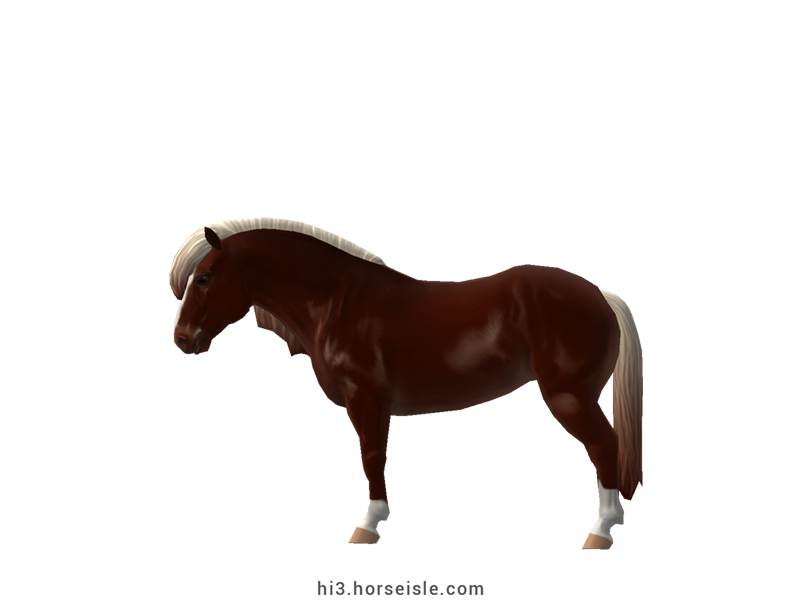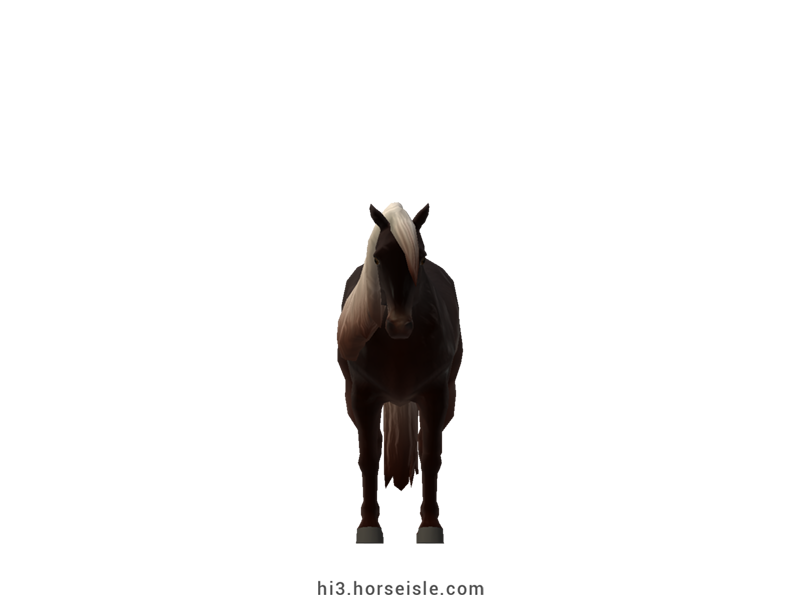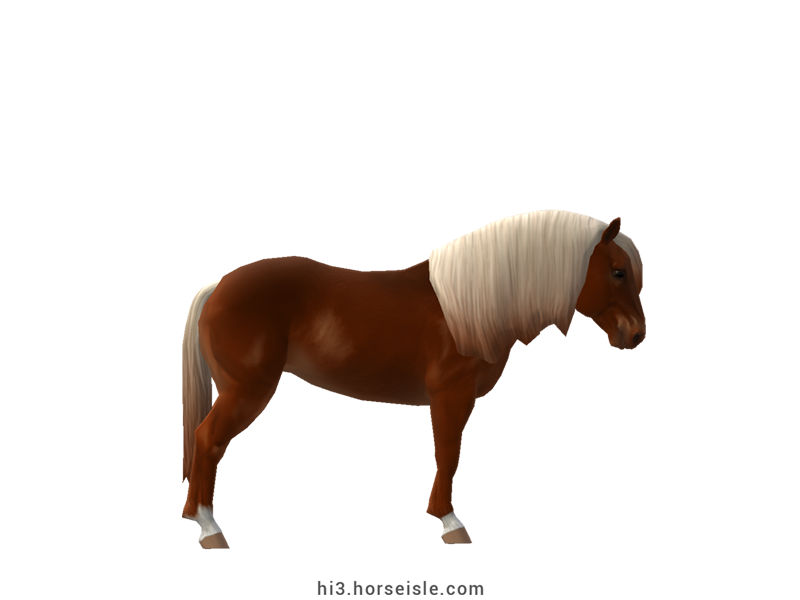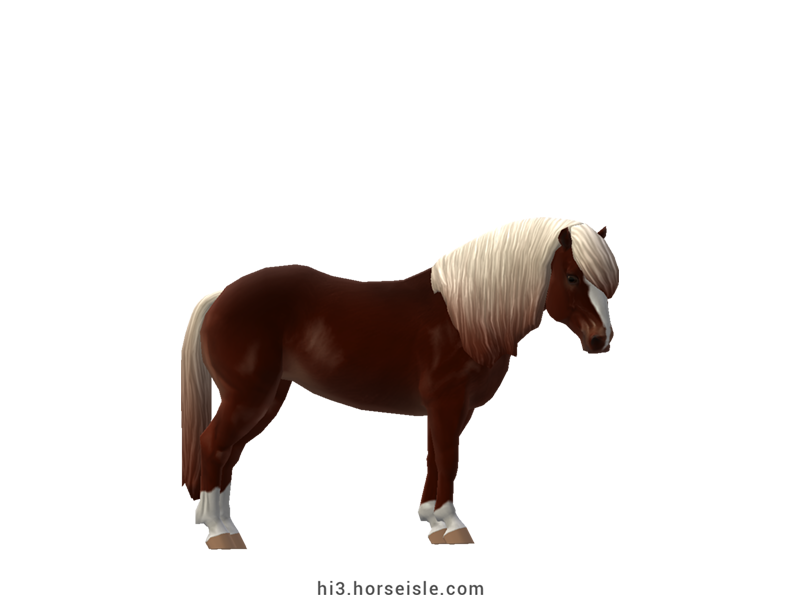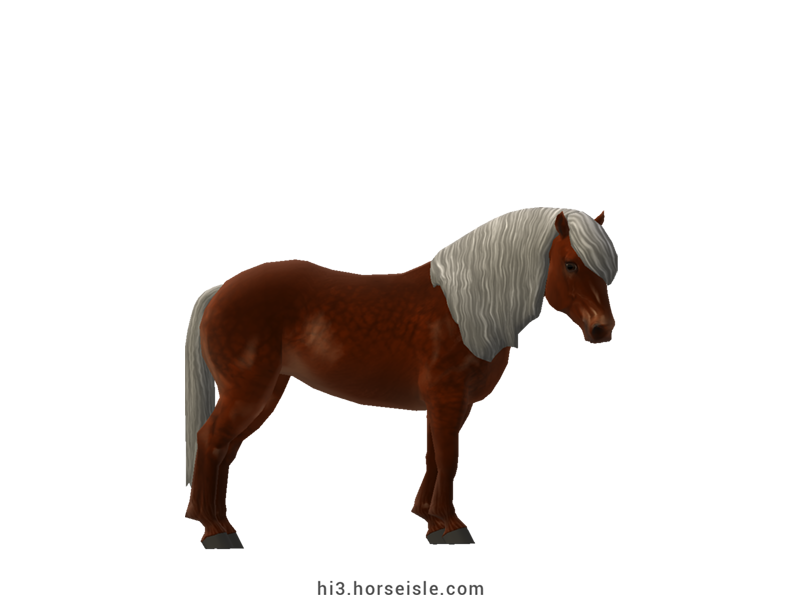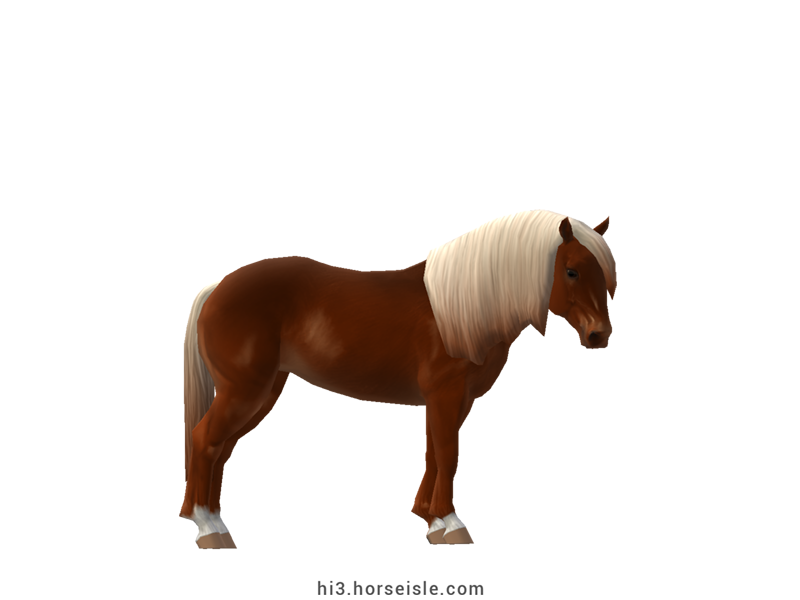Our Massive Real World Equine Reference!
[ INDEX ] Equine Type: Horse Breed: Black Forest Chestnut (BFC) [ PREV ] [ NEXT ]
About the Black Forest Chestnut:
Black Forest Chestnut horses were created centuries ago, and though it is unclear who were their ancestors, it is clear that they were crossed with Norikers and Bretons to develop the Black Forest Chestnut breed.
Originally, Black Forest Chestnut horses were used in forests and farms, which is why the mechanization of agriculture in the 1960s left them redundant. By the 1970s the breed almost went extinct, but it was saved thanks to a dedicated breeding program in Marbach Stud.
The Black Forest Chestnut today:
Although seemingly famous and common, the Black Forest Chestnuts is actually rare. Today, Black Forest Chestnuts are primarily bred in south Germany, with their breeding being regulated by Marbach Stud. A few are also bred in the United Kingdom. They are used recreational driving and recreational riding.
Conformation:
While Black Forest Chestnut horses are considered to be 'heavy drafts,' they are smaller and lighter than most other heavy draft breeds. Nevertheless, they are muscular horses, especially in their neck, which can be very thick.
Black Forest Chestnuts have a light-looking head for a draft breed, broad at the forehead and tapering toward the muzzle, with large eyes and small ears. The neck is muscular and has a round topline. The withers are low and connect to a short, muscular back. The croup is long and sloping, and the hooves are relatively small. The body is broad, although not as broad as seen in other drafts.
A mane as thick as a forest:
One of the hallmarks of Black Forest Chestnuts is their long, thick, manes that can be anywhere from straight and coarse to bulky and wavy. The forelock often reaches the muzzle and is as thick as the mane. The tail also grows thick, although not as overwhelmingly thick as the mane.
When it comes to feathering, the opposite occurs. The feathering of Black Forest Chestnuts is extremely light, growing only as a dense tuft behind the fetlocks. Some individuals have their feathering extending to the back of their cannons, although it is still sparse, while others lack feathering altogether, although the latter is extremely rare.
Performance metrics:
The following are the: range, average, (SD), and MOE of performance metrics of ordered Black Forest Chestnuts in Horse Isle (not bred ones). In rare cases,
Speed: 14.8-16.2, 15.5 (0.3), 0.05.
Sprint: 52-64, 58 (3), 0.54.
Accel: 0.88-1.08, 0.98 (0.05), 0.01.
Decel: 1.07-1.22, 1.14 (0.03), 0.01.
Jump: 4.95-5.28, 5.09 (0.06), 0.01.
Pull: 3.06-3.69, 3.35 (0.14), 0.03.
Turning: 50.98-64.03, 57.68 (2.69), 0.53.
Reverse: 2.6-3.0, 2.8 (0.1), 0.02.
Stamina: 47.36-52.84, 50.04 (0.94), 0.18.
Reaction: 0.80-0.89, 0.84 (0.02), 0.00.
Non-chestnut Black Forest Chestnuts?
Black Forest Chestnut are named after their iconic coat-color: chestnut. However, there are a few Black Forest Chestnuts who are bay, black, brown, and, even more rarely, grey, in color. Those horses are still being bred nowadays in order to, according to the official breed standard, preserve them as cultural assets.
That said, the breed standard also gives clear preference to chestnut-colored horses, stating that the breeding goal is to "maintain the breeding of a light-to-medium heavy draft horse in the desired color of chestnut with light long hair."
When it comes to the appearance of bay/black Forest Chestnuts, they have minor white markings (compared to chestnut Black Forests), and their manes and tails are always black.
Therefore, in Horse Isle, non-chestnut Black Forest Chestnut are registered in a sub-registry and are subjected to rigid breeding rules. See the 'Non-Chestnutn Black Forest Chestnut' for more information.
Coats & Height:
Colors & patterns: always flaxen chestnut. The coat is usually very dark shade, often sooty, but horses with slightly lighter shades are found as well. The coat is always solid and often has white markings.
* not brindle.
** for non-chestnut coats, see Non-chestnut Black Forest Chestnut.
Shades of flaxen: Black Forest Chestnut always have flxen manes and tails which either have the usual flaxen light-creamy color or have a darker, silvery tone. The latter is achieved in Horse Isle via the grey mane & tail trait that is found in this breed.
What about rabicano? in rare cases, Black Forest Chestnuts can show minimal tabicano ticking, especially around their flanks. However, this pattern is not found in Horse Isle, hence why Black Forest Chestnuts in Horse Isle don't carry rabicano.
Height: 14.2hh to 15.3hh.
[ INDEX ] [ PREV ] [ NEXT ]

